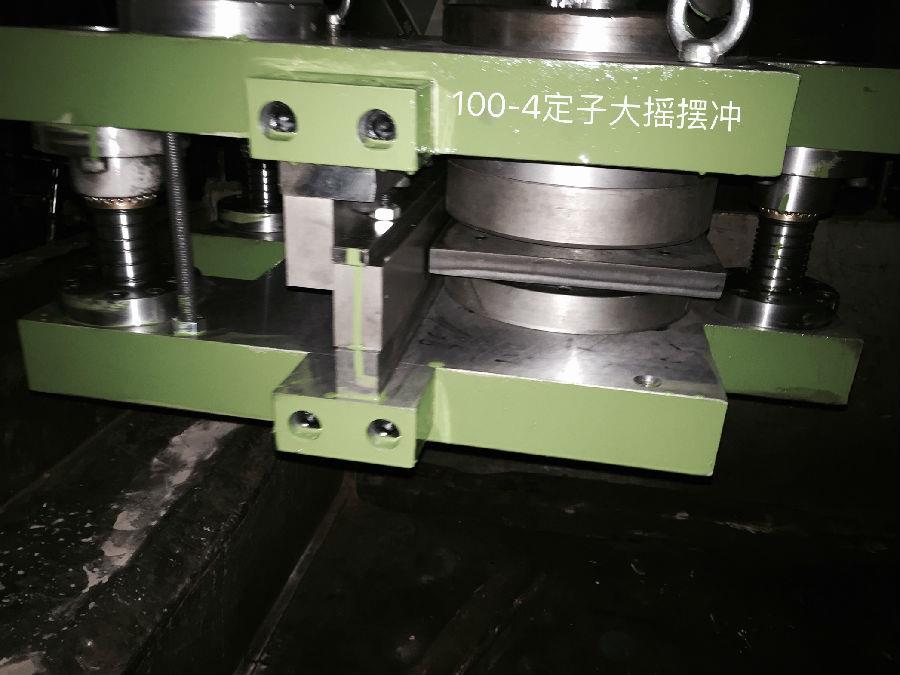First, the use of rotor casting aluminum mold
The rotor cast aluminum methods used by our company mainly include centrifugal cast aluminum and pressure cast aluminum. Let's take a look at the working principles and characteristics of these two methods of aluminum casting.
(1) The working principle of pressure cast aluminum is to inject the molten metal aluminum into the cavity with pressure and wait to cool and solidify into a casting. Its characteristics are: (1) throughout the die-casting process, pressure plays a major role. (2) During die casting, during the high-speed punching process of the metal liquid, if the gas in the cavity is too late to be exhausted, it will be drawn into the metal to generate air holes. (3) Since the metal filling process is performed under pressure, the rotor core can be die-cast in the cold state. (4) High production efficiency, easy to realize mechanization and automation, which can reduce labor intensity.
(2) The working principle of centrifugal cast aluminum is to inject molten metal aluminum into a rotating aluminum mold, so that it fills the cavity under the action of centrifugal force and solidifies. Its characteristics are: (1) Centrifugal force has an important impact on the molding and metal crystallization process of the casting, and it helps the gas and non-metallic impurities (lighter than metal) in the metal liquid to be discharged. More importantly, it affects the metal crystallization process and plays a role in strengthening shrinkage and crystallization. (2) The rotor core must be preheated. After the core is heated, it is oxidized on the trough section, which is beneficial to reduce the stray loss of the motor. (3) The equipment for rotor centrifugal casting of aluminum is relatively simple. However, there are many manual operations in the casting process, and the labor intensity is relatively large.
Second, the advantages and disadvantages of centrifugal and pressure cast aluminum and their common defects and preventive measures
1. Advantages and disadvantages of centrifugal cast aluminum The castings obtained by centrifugal cast aluminum have a tighter metal structure, better quality, less complicated equipment, simpler operation technology, and less stray losses compared to pressure cast aluminum, but their productivity Not high, poor labor conditions and high labor intensity.
2. Advantages and disadvantages of pressure cast aluminum When pressure cast aluminum, the speed of aluminum water injection into the rotor slot and cavity is extremely high, and its filling speed can reach 10 ~ 25m / s. When die-casting, the molten aluminum does not flow for a period of time like centrifugal cast aluminum, but it is completed instantaneously, so the core and the mold do not need to be preheated. The core and mold are not preheated, which greatly reduces the operating process and improves labor conditions. In addition, because there is no complicated solidification and shrinkage process like centrifugal cast aluminum, the quality of cast aluminum rotor is stable, and the first pass rate is more than 99%.
3. The quality of pressure cast aluminum currently has the following problems:
(1) Due to the high pressure, the speed of filling the cavity with aluminum water is very high. It was difficult to exhaust the air in the cavity, which would cause pores in the casting. (2) Since the gate is cooled quickly, the casting cannot be contracted through it, so the thicker part of the casting (end ring) is prone to shrinkage. (3) The rotor core is not preheated, and the groove wall is not insulated by the oxide layer. Moreover, due to the high pressure, the aluminum water closely adheres to the groove wall and even enters the silicon steel sheet, increasing the leakage current between the guide bars, which makes the rotor additional loss greatly. increase. When die-casting aluminum, the process of melting aluminum and cleaning is the same as that of centrifugal aluminum casting. Due to the high pressure during die casting, the fluidity of aluminum water is not a big problem. The temperature of aluminum water can be lower, and the pouring temperature can be controlled at 650∽720 ° C. When the specific pressure is large, the fluidity of the aluminum water is not a problem, and the pouring temperature may be lower. Every time, the aluminum water added to the tank must be strictly controlled. If the feed is too small, the cast will be dissatisfied, and if it is too much, it may fly out and hurt people. Attention should be paid to the maintenance of equipment when die-casting aluminum. The die-casting machine should be lubricated according to the provisions of the process code, and the material tank should be coated.

Related News
- High-voltage motor punching die operation specification
- What are the components of a simple stamping blanking mold?
- Blanking die process and principle
- Structural factors affecting composite molds
- Possible problems with rotor molds
- Precautions in the use of self-service die
- Characteristics of stator mold
- Tips for self-help die
- Introduction of blanking die
- Attentions in the design of fixed-rotor tooling fixtures
- Precautions for the use of stator embossing molds



